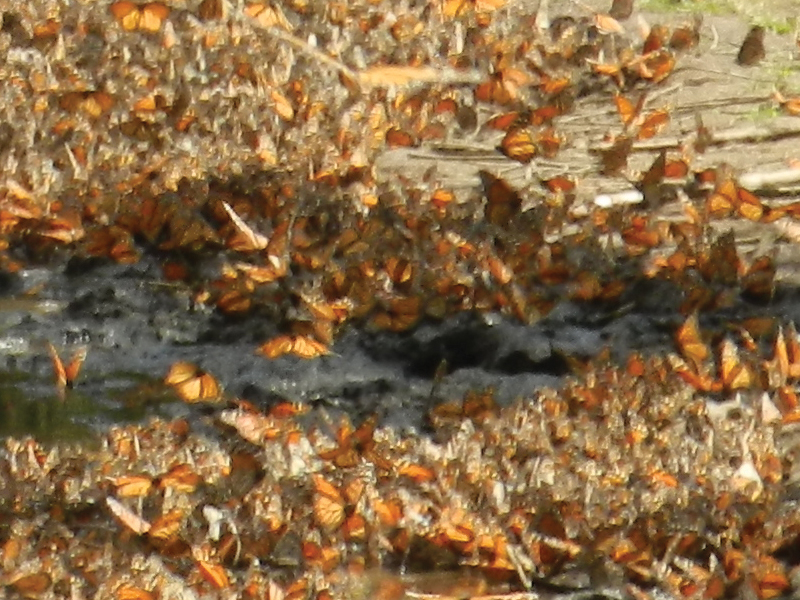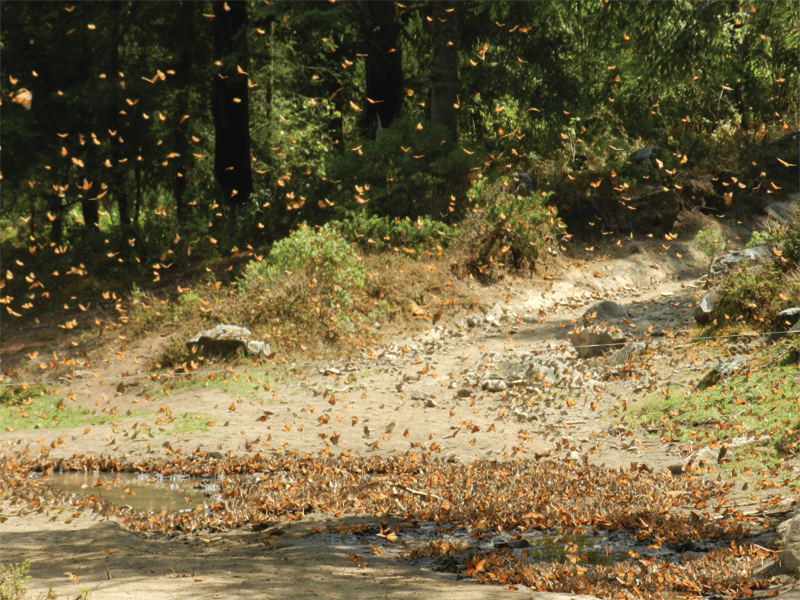by Sue Slotterback
 Monarch tagging began in 1940, in efforts to learn where monarch butterflies went during the winter. It took 36 years before the first tagged monarch was finally seen… in Mexico! Last February, I got a chance to travel to Mexico to see millions of monarch utilize these special overwintering sanctuaries in Mexico. The monarchs I saw were the very same monarchs that had passed through Stone Harbor just a few months prior. It took four to five generations for the monarchs I saw in February to migrate up into New Jersey and Canada. The generation we are seeing now is heading back to Mexico’s sanctuaries where their great-great grandparents spent last winter.
Monarch tagging began in 1940, in efforts to learn where monarch butterflies went during the winter. It took 36 years before the first tagged monarch was finally seen… in Mexico! Last February, I got a chance to travel to Mexico to see millions of monarch utilize these special overwintering sanctuaries in Mexico. The monarchs I saw were the very same monarchs that had passed through Stone Harbor just a few months prior. It took four to five generations for the monarchs I saw in February to migrate up into New Jersey and Canada. The generation we are seeing now is heading back to Mexico’s sanctuaries where their great-great grandparents spent last winter.
It was nothing short of miraculous for early researchers to spot a tagged monarch amongst the millions covering the trees and meadows. Today, tagging efforts have changed, and are focused on finding the specific routes monarchs take to get to Mexico. The Wetlands Institute (TWI) Monarch Ambassadors have joined that effort, tagging monarchs they find in the Stone Harbor area. Meanwhile, Cape May Monarch Monitoring Project taggers tag and wait in Cape May on the lookout for TWI’s tiny green tags. Both parties are hoping to learn if our monarchs depend on Cape May as a stopover before crossing the Delaware Bay en route to Mexico.
Recovering tagged monarchs is always exciting, as each one tells another part of the journey and makes incredible connections. On September 29 TWI’s Monarch Ambassador Jan Zimmerman found a tagged monarch in the gardens of Stone Harbor Point. It was tagged in Mount Holly on September 11 by Michele Horvath, a former TWI research intern from 1992. So, if you see a tagged monarch, be sure to record the number of the tag – it just might have an unexpected connection to you!
To report a tagged monarch, go to Monarch Watch: https://monarchwatch.org/report-tag.

